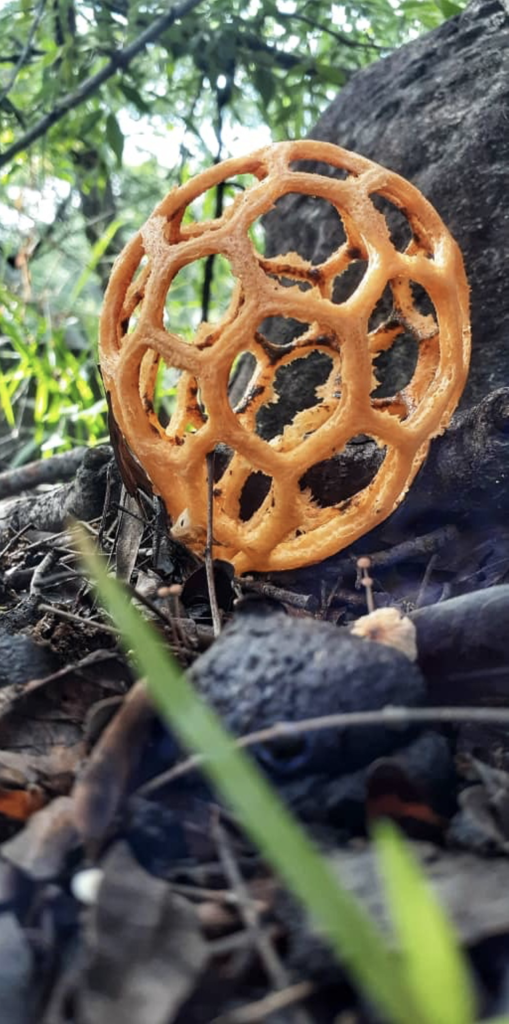January 2021
The latticed stinkhorn
Share:
The latticed stinkhorn
Josh Saunders, one of the young residents at Malilangwe, photographed this remarkable fungus. Scientifically it is known as Clathrus ruber, and commonly referred to as a latticed stinkhorn, basket stinkhorn, or red cage fungus because of the fruit bodies that are shaped like oval hollow spheres with latticed branches.
The fruit body can reach heights of up to 20 cm (7.9 in). The colour can range from pink to orange to red, due to the carotenoid pigments lycopene and beta-carotene. The colour also appears to be dependent upon the temperature and humidity of the environment. The fruit body bursts the egg open as it expands, a process that can take as little as a few hours. The egg releases the spores.
The unusual shape of the receptacle has inspired some creative comparisons: the German Mycological Society—who named C. ruberthe 2011 “Mushroom of the Year” – described it as, “like an alien from a science fiction horror film”. Imagine the fright that the 19th century Italian botanist Ciro Pollini got when he discovered one growing on a human skull in a tomb in a deserted church!
The fungus is saprobic, feeding off decaying woody plant material. It has a fetid odour, somewhat like rotting meat, which attracts flies and other insects, even dung beetles, to help disperse its spores. The inner surface is coated with a dark substance known as gleba that is partly responsible for the odour. Like other stinkhorn fungi, C. ruberbioaccumulates the element manganese. It has been postulated that this element plays a role in the enzymatic breakdown of the gleba with simultaneous formation of odorous compounds.
We are fortunate to be able to call on Dr Cathy Sharp, a renowned mycologist living in Zimbabwe who has been studying mushrooms for most of her life, and she asked us to press this beautiful specimen for her. Now this is a trickier task than it seems when you consider that in 1862 Mordecai Cubitt Cooke wrote, “it is recorded of a botanist who gathered one for the purpose of drying it for his herbarium, that he was compelled by the stench to rise during the night and cast the offender out the window.”
The latticed stinkhorn is generally listed as inedible or poisonous in many mushroom publications, but the smell alone should be enough of a warning to any person or animal considering eating it.

Photo by Josh Saunders.

By Jenny Hishin
Author / Field Guide